When I first tried gardening, I thought I just tossed some seed into a pot, and voila- instant jungle. Spoiler: I ended up with nothing more than a pot of confusion. Turns out seeds are a tad pickier than my instant coffee.
So, I decided it was time to get serious about this whole germination thing.
After some entertaining attempts that involved poring over our gardening books, which felt like they were straight out of a history museum, and getting advice from experienced gardeners who treat their plants like VIPs, I finally figured it out.
The secret? It’s all about seed germination’s timing and temperature. Now, with plenty of trial and error under my belt, I’m excited to share what I’ve learned with you. Let’s dive in and discover the perfect recipe to get your seeds sprouting with confidence!
Things to Do to Get Your Seeds Ready
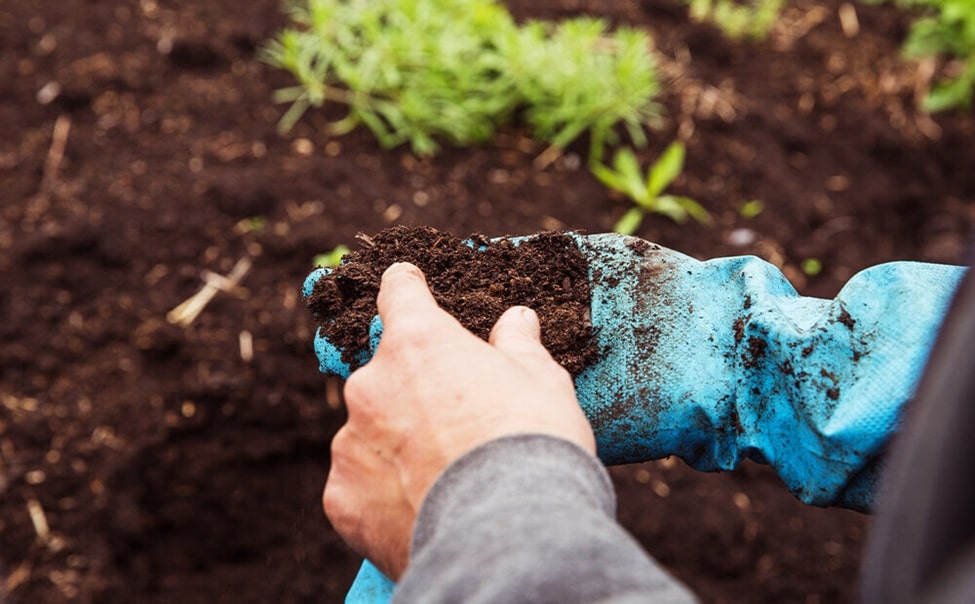
Select quality seeds
Selecting quality seeds is the first step in setting yourself up for a flourishing garden. As you sift through options, aim for those from reputable suppliers. You must check packaging dates to ensure your seeds are ready to sprout vibrant plants.
While exploring, keep an eye out for any seeds that might look damaged or discolored. Healthy seeds are typically uniform in size, shape, and color.
This initial effort pays off by preventing planting problems later on. Plus, you’re ensuring that each tiny seed has the potential to grow into a strong plant.
Pre-soak seeds
Pre-soaking seeds is a super simple way to jumpstart your gardening. Just soak your seeds in water for a few hours or overnight. This helps them sprout faster, especially the tough ones like beans and peas.
It softens the seed coat, making it easier for the sprouts to break through. Just remember, some seeds might need a bit more soak time. Delicate seeds might need just a quick dip, while tougher ones could use an overnight soak.
You can use lukewarm water and keep an eye on them—you don’t want them to soak too long and start to rot.
Prepare your soil
You want your seeds to have the best seat in the house, so go for a rich, well-draining soil mix. When your soil is packed with nutrients and has good airflow, you’ll see some lively growth.
Start by selecting a rich, well-draining soil mix to provide a cozy home for your seeds. Stay away from heavy, clay-like stuff that can suffocate your sprouting seeds.
Adding some compost can really do wonders, boosting the soil’s health and making it perfect for planting. This part is all about setting up a snug environment where your seeds can thrive. A little elbow grease now means strong, happy plants later.
Set up your planting containers
Start by choosing containers with good drainage to avoid waterlogged roots. It’s handy to have various sizes, especially if you’re starting multiple types of seeds.
Here’s where you can get a bit crafty. You can use recycled items such as egg cartons or yogurt cups—just make sure they have holes for drainage.
Keep an eye out for too much moisture, especially mold or algae. If you see that, you might need to tweak your watering or improve drainage.
Provide the right environment
Getting the right environment for your seeds is super important for their growth. You should start with adequate warmth and light, as most seeds thrive in temperatures between 65-75°F.
A sunny windowsill or a grow light can work wonders to simulate ideal conditions. You’ll notice your seeds doing well if you get this right. Keep an eye on them; if they get leggy, they might need more light. But don’t overdo it with direct sunlight either.
Maintaining proper humidity with a plastic cover or a mini greenhouse setup can also give them a great start.
What is seed germination?
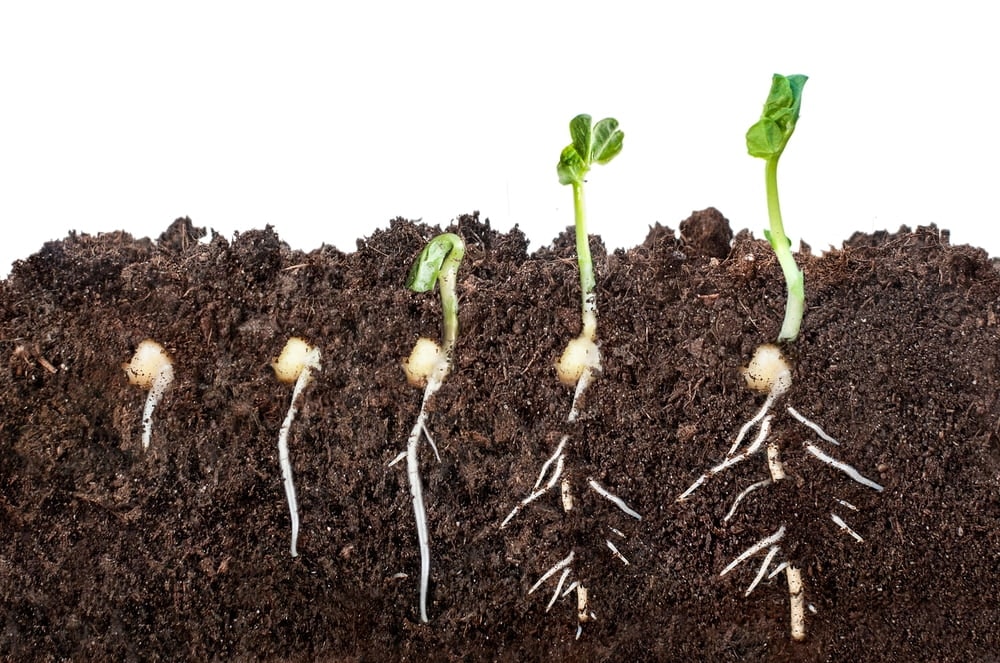
Seed germination is the process by which a seed develops into a new plant.
This process begins when conditions are favorable, typically involving adequate moisture, oxygen, and the right temperature, causing the seed to swell and break its outer coat.
Factors Affecting Germination Time
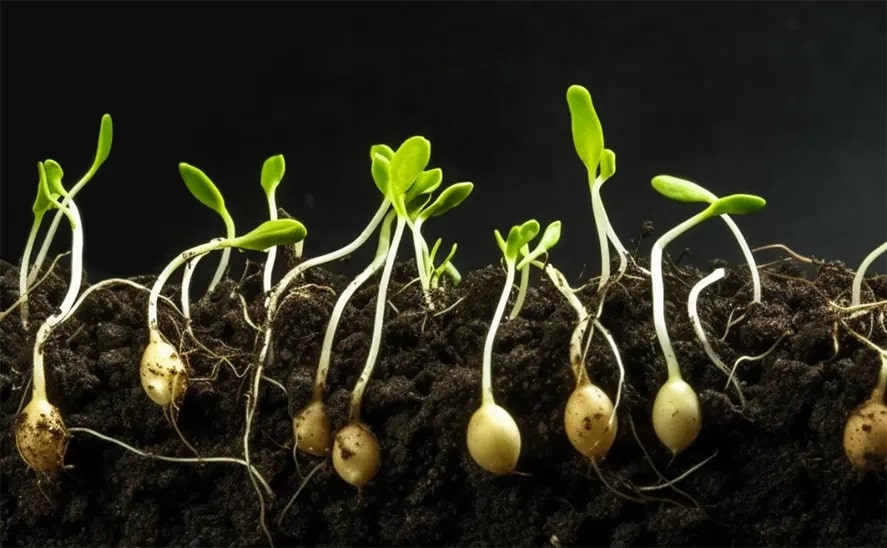
Water Availability
Watering your seeds is crucial; they need it to activate the enzymes that kick-start their growth. You’ll need to find the right balance—too little water and your seeds won’t sprout, too much and you risk drowning them.
When you water, aim for soil that’s evenly moist but not soggy. You want the soil to darken but not turn into a swamp.
Consistent moisture is especially important in the early stages. If your soil dries out quickly, try using a humidity dome or a plastic cover to keep the moisture in.
Oxygen Supply
Oxygen supply plays a crucial role in seed germination. Seeds need oxygen for respiration, which fuels their growth into seedlings. So, you’ll want to keep an eye on your soil and how deep you’re planting to make sure your seeds get the air they need.
The secret sauce here is well-aerated soil. If your soil is too packed, it can choke off the oxygen supply, slowing down or even stopping germination. Look out for heavy, waterlogged soil, as this can suffocate seeds, preventing them from sprouting.
Light Conditions
Light is a big deal when it comes to seed germination, yet they vary depending on the seed type. Some seeds crave light to kickstart growth, while others prefer the darkness.
Before you get started, take a peek at the seed packet or do a little research to find out what your particular seeds want.
For those light-loving seeds, just sprinkle them on the surface or give them a light soil covering. Bright, indirect sunlight or grow lights are their best friends.
On the flip side, some seeds are more like night owls and prefer the dark to germinate. For these, plant them a bit deeper or use a light barrier to keep things cozy.
Temperature
Each type of seed has its own sweet spot when it comes to the perfect temperature. Most seeds feel most at home in temperatures ranging from 65 to 75°F (18-24°C).
Where you place your seed trays really matters. Remember to steer clear of drafty window sills or any place where the temperature might swing wildly. Consistent warmth is key to helping those seeds sprout quickly and evenly.
If you’re starting seeds indoors when it’s chilly outside, consider using a heat mat—it can really make a difference.
How does temperature affect germination?
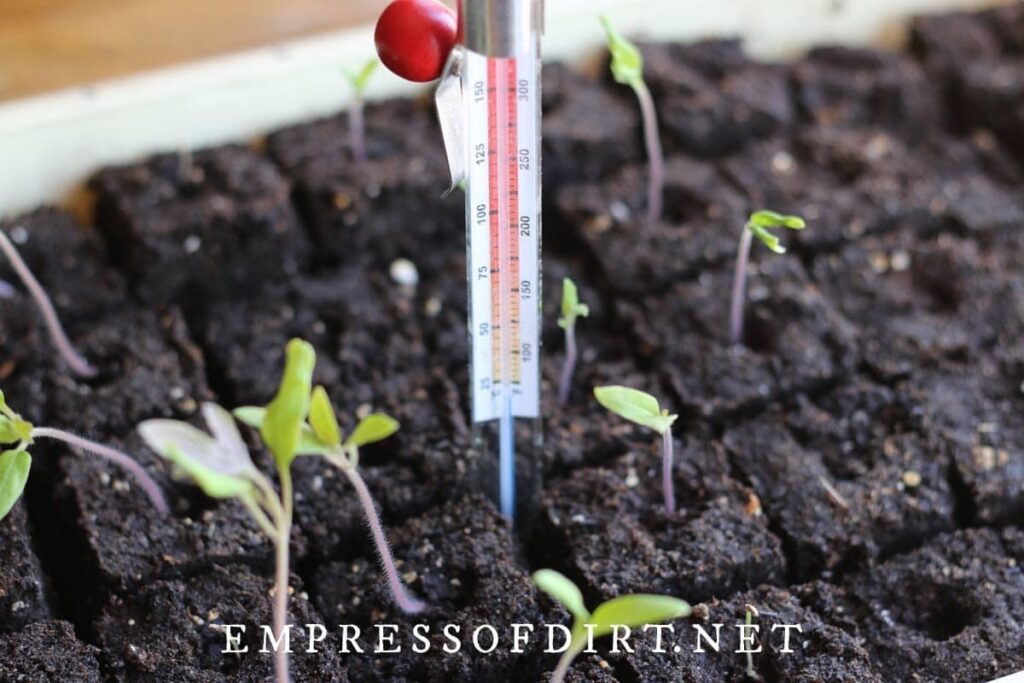
Enzyme Activity
Inside every seed, there are little enzymes hard at work breaking down stored food into energy. They work faster as the temperature rises—up to a point. If it gets too cold, these chefs slow down or even stop.
On the flip side, if it gets too hot, they can get overwhelmed and shut down, putting a halt to germination.
Water Absorption
Seeds are like sponges; they need to soak up water to kickstart their growth. Warmer temps act like a green light, speeding up water uptake and jump-starting germination.
But if things are on the cooler side, the process hits a speed bump, dragging out germination.
Dormancy Breaking
Some seeds are programmed to wait for just the right moment to sprout. They have a built-in dormancy, like a sleep mode, until they get the right environmental “wake-up call.”
Temperature changes, such as a cold spell followed by warmth, signal the seed that it’s showtime!
Cell Division and Growth
Temperature is also the boss of how fast cells divide and grow. When conditions are just right, these processes hum along smoothly, producing strong, healthy seedlings.
Pathogen Control
Finally, temperature plays a role in keeping nasty pathogens in check. Both extremely high and low temperatures can knock out potential threats, creating a safe haven for your budding seedlings.
How to check soil temperature?
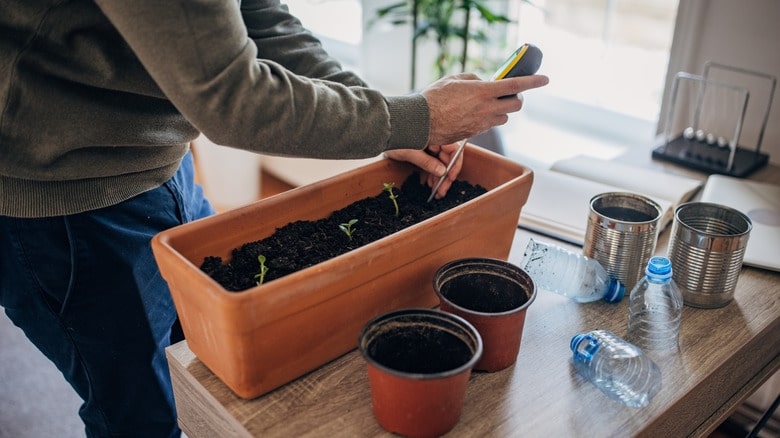
Use a soil thermometer
Using a soil thermometer is the best way to check the soil temperature. Just stick it into the soil about 2-4 inches deep.
To get the full picture, take readings at different times of the day because soil can be a bit moody—it heats up and cools down faster than you’d think!
Try the DIY method
If you don’t have a soil thermometer, no worries. A regular kitchen thermometer can do the trick. Just push it into the soil at the planting depth for your seeds and wait a few minutes to get an accurate reading.
Test with your hand
You can also use your hand to get a rough idea of the soil temperature. Warm soil will feel slightly warm, while cool soil will feel cold. This method isn’t as precise, but it can give you a quick sense if you’re familiar with different temperatures.
Use the plastic wrap method
Another way to warm up the soil is to lay clear plastic wrap over it for a couple of hours in the morning. This helps make the soil warmer, closer to the temperature your plants need. After a few hours, check the soil with a thermometer for the actual reading.
Check weather reports and apps
Local weather reports or gardening apps can also help you keep track of soil temperature. These tools provide useful estimates, especially during planting season, making it easier to know when the soil is ready for your seeds.
Use a digital meat thermometer
Got a digital meat thermometer lying around? Use it to check the soil temperature. Insert it to the required depth and wait for the reading to stabilize. This is super convenient if you’re after a quick digital readout.
Invest in a soil temperature probe
Consider getting a specialized soil temperature probe. These gadgets are made for gardening and often come with easy-to-read digital displays and depth markers. Just stick the probe into the soil and check the temperature directly from the display.
How to maintain the right temperature for germination?
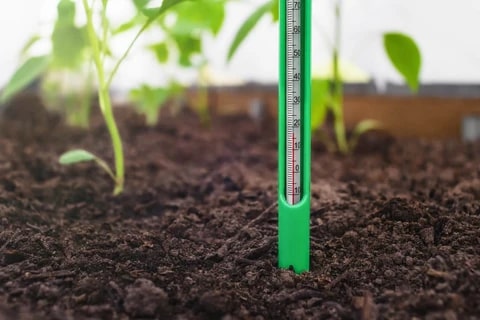
Use heat mats
Heat mats act as cozy electric blankets for your seeds. By offering gentle, consistent warmth, these mats create a perfect environment for seeds to germinate, even during those cold winter months.
Just plug them in underneath your seed trays, and voilà! Instant warmth that speeds up the germination process by mimicking ideal soil conditions.
Select the right location
Choosing the right spot for your seed trays is similar to picking the perfect room in a house. Seeds need a warm, draft-free place to thrive.
Cold windowsills are a big no—they might as well be a haunted house for seeds! Instead, opt for stable, warmer spots like the top of a refrigerator because it radiates just enough heat.
Or find a heated room where temperatures are more consistent. These areas provide a snug environment that encourages seeds to sprout.
Create mini greenhouses
Mini greenhouses or plastic covers are your seeds’ personal climate control system. These tiny shelters trap heat and humidity, creating a cozy microenvironment for your seeds to flourish.
Simply cover your seed trays with these little greenhouses, and you’ll notice how well they retain warmth.
Control with a thermostat
If you have a dedicated grow room or greenhouse, a thermostat is your best friend. This handy device monitors the temperature closely, ensuring it stays in that sweet spot preferred by your seeds.
It acts as your personal assistant, ensuring the perfect climate 24/7—too cold or too hot—and the thermostat adjusts accordingly. This precise control greatly boosts your chances of successful growth.
Insulate seed trays
When placing seed trays, consider them like delicate cakes just out of the oven—they need insulation to keep them at the right temperature. Placing your trays on insulating materials such as foam boards can prevent cold from seeping in from below.
This small step ensures the warmth you’re providing stays with your seeds, giving them the steady environment they need to sprout. It gives your seed trays a protective shield against unwanted chill.
Utilize natural sunlight
Natural sunlight is one of the best gifts for your seeds, acting as a natural heater for the soil. Make sure you position your seed trays to absorb the optimal amount of sunlight during the day.
South-facing windows are prime real estate because they get the most intense sunlight. This not only provides warmth but also starts your seedlings off with the best natural light.
Seed Germination Time and Temperature Chart
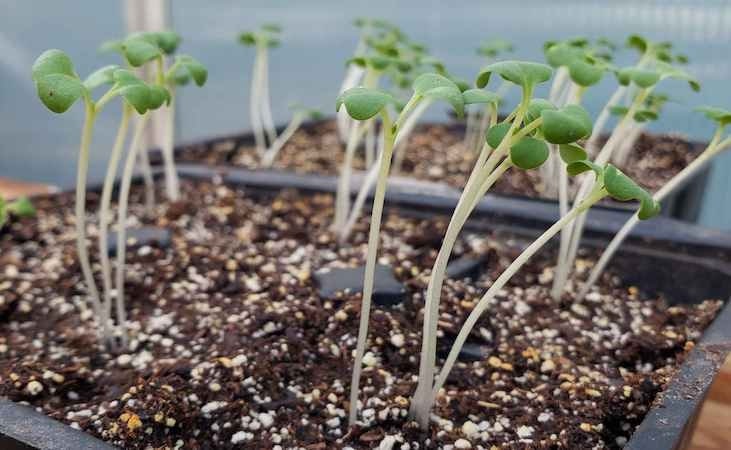
Different plants thrive at different temperatures when they germinate. For instance, tomatoes love the warmth and usually sprout in about a week if the soil is between 70-85°F. On the flip side, seeds like spinach prefer cooler conditions, around 60-75°F.
Time is another crucial factor. Even if you get the temperature right, different seeds have their own timelines for sprouting.
For example, tomato seeds might take just a week to germinate, while spinach seeds require a bit more time because they like it cooler. Recognizing these differences can help you set realistic expectations and provide the consistent care each plant needs.
| Plant Type | Plant | Germination Time (Days) | Optimal Temperature (°F) | Optimal Temperature (°C) |
| Herb | Basil | 5-10 | 70-75 | 21-24 |
| Cilantro | 7-14 | 65-70 | 18-21 | |
| Dill | 7-14 | 60-70 | 16-21 | |
| Mint | 10-15 | 68-75 | 20-24 | |
| Oregano | 7-14 | 65-75 | 18-24 | |
| Parsley | 14-21 | 70-75 | 21-24 | |
| Rosemary | 14-28 | 65-75 | 18-24 | |
| Sage | 10-21 | 70-75 | 21-24 | |
| Thyme | 7-14 | 65-75 | 18-24 | |
| Vegetable | Tomato | 5-10 | 70-80 | 21-27 |
| Lettuce | 7-10 | 60-75 | 16-24 | |
| Carrot | 10-20 | 55-75 | 13-24 | |
| Cucumber | 7-10 | 70-95 | 21-35 | |
| Bell Pepper | 7-14 | 70-85 | 21-29 | |
| Spinach | 7-14 | 60-75 | 16-24 | |
| Fruit | Strawberry | 7-21 | 65-75 | 18-24 |
| Watermelon | 5-10 | 70-95 | 21-35 | |
| Melon | 5-10 | 70-80 | 21-27 | |
| Seed | Sunflower | 7-10 | 70-85 | 21-29 |
| Pumpkin | 7-10 | 70-90 | 21-32 | |
| Pea | 7-14 | 50-75 | 10-24 |
FAQs About Seed Germination’s Time and Temperature
What is the optimal temperature for seed germination?
The ideal temperature for seed germination varies significantly among species. For most vegetable and flower seeds, temperatures between 68°F and 86°F (20°C and 30°C) are generally optimal.
Warm-season crops like tomatoes and peppers prefer the higher end of this range, while cool-season crops such as lettuce and spinach can germinate at the lower end.
How long do most seeds take to germinate?
The duration for seed germination spans widely depending on the plant type and environmental conditions.
Some seeds, like radishes or lettuce, can germinate within a few days under optimal conditions, while others, like parsley or peppers, can take several weeks.
Can seeds germinate without any light, relying solely on time and temperature?
Many seeds primarily require appropriate moisture and temperature conditions for germination and do not necessarily need light.
However, following germination, most seedlings need light to continue healthy growth and development, transitioning from seed energy reserves to photosynthesis-driven growth.
Does seed size affect germination time with respect to temperature?
Typically, smaller seeds have less stored energy and may germinate more quickly under ideal conditions since they have minimal energy reserves to sustain prolonged dormancy.
Larger seeds can afford to wait longer for suitable germination conditions due to their greater energy reserves.





